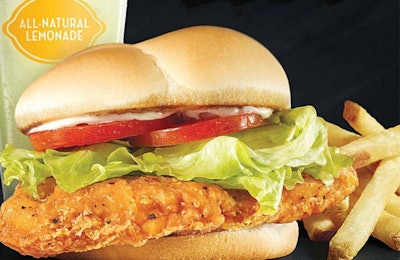
The best way to partner with a poultry supply chain manager is to think like one.
That advice was shared at the 2015 National Chicken Council (NCC) Marketing Seminar by Bill Bush, senior director of sourcing and supply chain innovation at Quality Supply Chain Co-op Inc. (QSCC). QSCC is the exclusive supply chain organization for about 6,000 Wendy’s restaurants in North America.
During the NCC panel discussion on “Challenges and Opportunities for Chicken,” Bush offered these tips for thinking like a supply chain manager:
- Make poultry supply assurance your top priority.
- Be agile in adapting to changing needs for poultry.
- Be willing to try something new in poultry.
- Transition to a circular poultry production model.
1. Make poultry supply assurance your top priority.
“QSCC’s primary role is to ensure supply to Wendy’s restaurants,” Bush said. “Most Wendy’s franchises are family-run businesses, which make investments for generations to come. They don’t build restaurants with expiration dates.”
To fulfill this role, QSCC supply chain managers need to understand the capabilities and limitations of each component in their supply chain. “We want to partner with our suppliers to identify and address both opportunities and risks,” he added.
2. Be agile in adapting to changing needs for poultry.
Supply chain managers need to anticipate and quickly adapt to changes in consumer behavior, Bush said.
“Disruption for the chicken industry is already occurring at the consumer level, and that impacts our supply chain,” he added. “We must work together to address the new reality of consumers demanding to know where their food comes from and how it impacts the planet.”
In order for supply chain managers to be agile in adjusting to changes, “we need our supplier partners to make agility part of their corporate DNA,” Bush said.
3. Be willing to try something new in poultry.
Innovation will be a key to future growth for Wendy’s and for the chicken industry, Bush said, “but innovation doesn’t happen unless you are willing to try something new.”
As an example, Bush shared the example of Randy Dowdy, a first-generation farmer in Georgia who won the 2014 National Corn Growers Association National (NCGA) Corn Yield Contest. In 2014, the U.S. national average for bushels of corn per acre was 171, but Dowdy harvested 503 bushels per acre.
When asked how he did it, Dowdy said it was because of his “willingness to try something new.”
4. Transition to a circular poultry production model.
Food production in the U.S. is the most efficient in the world. Experts estimate that 30 percent to 40 percent of the food produced in the U.S. ends up in landfills, which is the lowest percentage in the world.
“Today’s chicken production system is linear, and the industry thinks in terms of starting points and end products,” Bush said. “The industry has an opportunity to improve by adopting a circular production model that includes zero tolerance for food waste in the supply chain.”
He said one of the biggest opportunities for the chicken industry to reduce food waste is emerging technology for nutrient recycling. This process takes unavoidable food waste, which cannot go directly into the animal feed system today, and harnesses nature to recycle the nutrients back into a natural feed.
“Adopting a circular production system with zero tolerance for waste will provide increased production, improved efficiency, and other measurable benefits for the industry and for humanity as a whole,” he said.
“For supply chain managers and the chicken industry to prosper in the future, we will need to address new challenges and new opportunities,” Bush added. “This will require a willingness to embrace new ways of thinking and doing things.”

















